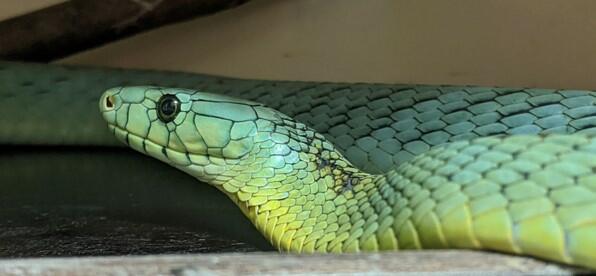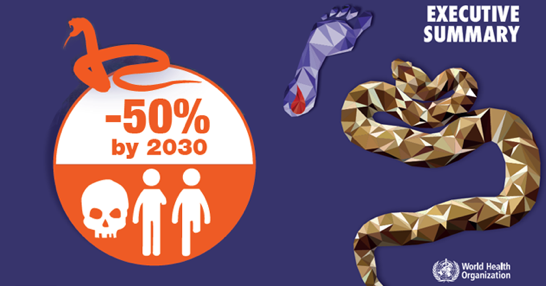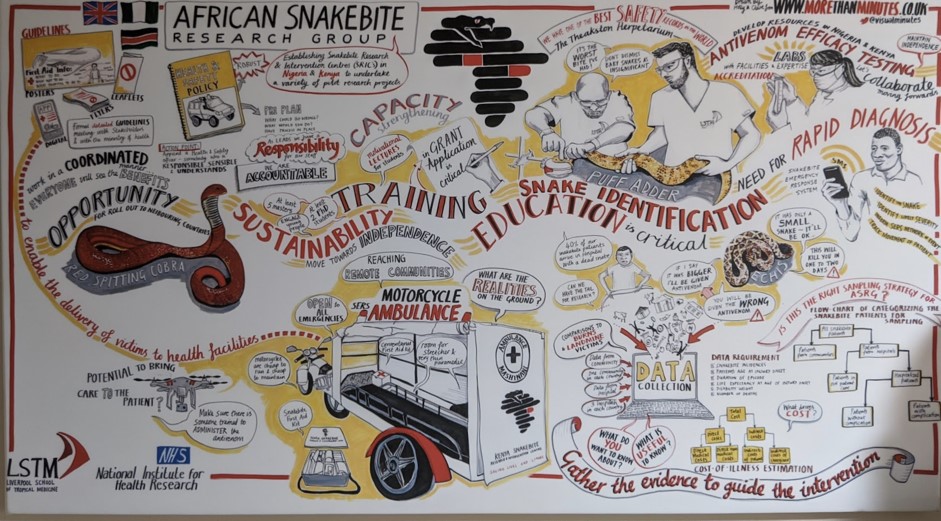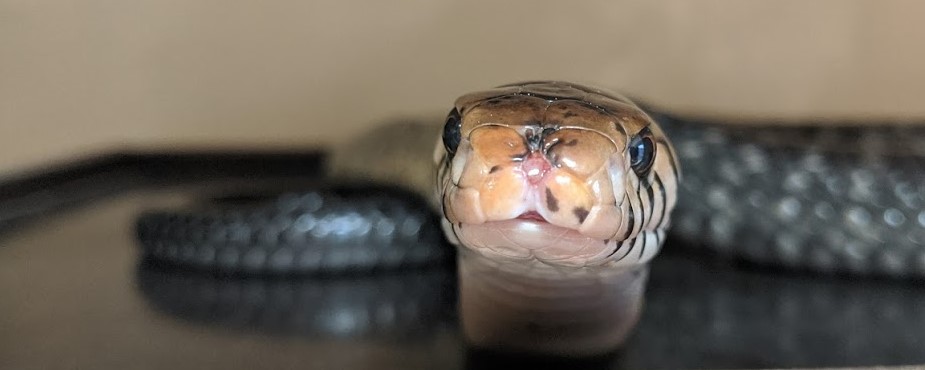

Snakebites kill more than 120,000 people each year and leave another 400,000 with life-changing disabilities, mostly in the poorest communities. Every 5 minutes approximately 50 people are bitten by a snake, of whom 25 people will be envenomed, 4 will be permanently disabled and 1 will die.
Myself and fellow LSTM students went on a Valentine’s Day tour of the School's herpetarium, where Paul Rowley and his team extract venom from snakes to help improve our understanding of snake venom biology and improve the efficacy, safety, and affordability of antivenom treatment for snakebite victims.
In 2017, the WHO re-instated snakebite into its category A list of Neglected tropical diseases (NTDs), after it was removed in 2009.
The WHO aims to halve global mortality from snakebites by the year 2030
Out of the 6.8 billion people who live in close proximity to venomous snakes, 750 million live far from health centres, and these health inequalities are reflected in the map below. LMICs also often lack the required infrastructure for adequate anti-venom distribution and there are also shortages of antivenoms worldwide: indeed if a clinic has a quantity of antivenom, it may not match the phenotype of the offending snake.
The WHO has invested $136 million into ongoing research into snakebite, predominantly focusing upon the quality of anti-venom production, how this is regulated and investing in research to improve product safety, efficacy and clinical effectiveness.

One problem is that many countries with a high prevalence of snakebites do not make antivenom in-country. Combined with potentially unsafe or ineffective products, this can undermine a local population’s confidence in antivenom as a useful treatment4, which will in turn impact negatively upon morbidity and mortality.
It is important to join with these countries in collaborative scientific research, yet it is equally necessary to engage with and educate, local healthcare workers and populations in order to challenge health beliefs and behaviours.

The African Snakebite Research Group is one such partnership that aims to do this. Established between the college and similar institutes in Nigeria, Kenya, and Cameroon, it takes a holistic approach towards reducing morbidity and mortality, looking at snakebite in the wider context of the local community, as illustrated in this image that is proudly displayed in the foyer of the herpetarium.

If anyone studying at LSTM has not been to have a look at these incredible creatures, I would strongly recommend it. Whilst a little unnerving, it really was fascinating to be so close to such deadly creatures. Paul and Ed have some great stories, and you may even be inspired to carry out your own Snakebite research, as my friend and previous DTM&H student, Dr. Beth Moos did in Myanmar!

 If you want to hear about what she got up to, have a listen on my podcast where she discusses this and more.
If you want to hear about what she got up to, have a listen on my podcast where she discusses this and more.
You can also read about it here.